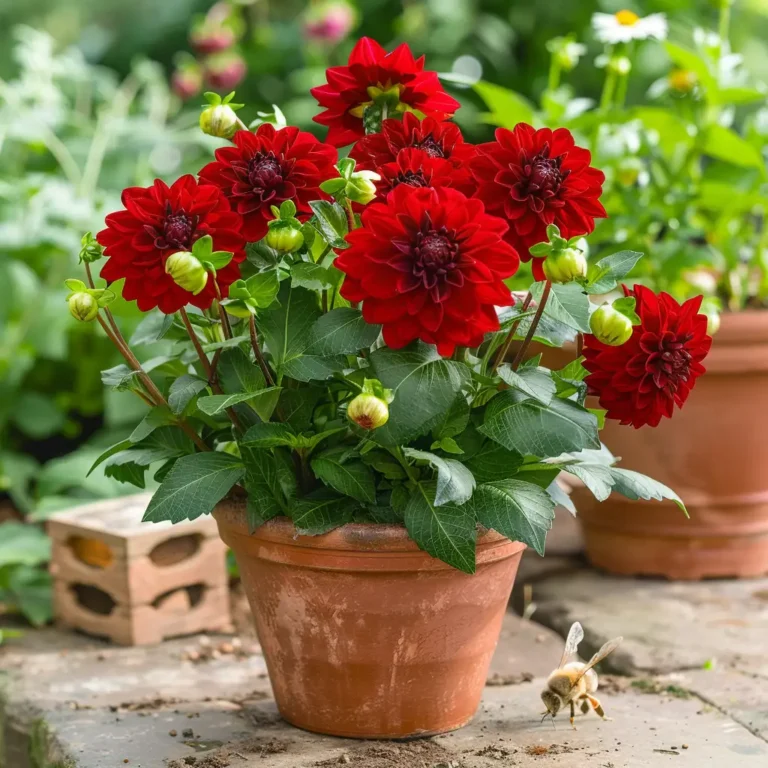Introduction
Dahlias are a favorite among gardeners for their stunning blooms and vibrant colors. Among the various types, Radiant Red Dahlias stand out for their striking appearance and versatility in garden design. This article provides a detailed guide on everything you need to know about growing and caring for these beautiful flowers.
History and Origin of Dahlias
Dahlias originated in Mexico and were first brought to Europe in the late 18th century. Red Dahlias have since become a popular choice for gardeners looking to add a splash of bold color to their gardens.
Types of Red Dahlias
There are numerous varieties of Red Dahlias, each with its unique charm:
- Arabian Night: Known for its deep red petals.
- Bishop of Llandaff: Features dark foliage and bright red blooms.
- Firepot: A striking variety with fiery red flowers.
Growing Red Dahlias
Growing Red Dahlias successfully involves understanding their specific needs:
- Soil Requirements: Well-draining, fertile soil is ideal.
- Sunlight and Temperature: They thrive in full sun and prefer moderate temperatures.
- Watering Tips: Regular watering is essential, but avoid waterlogging.
Planting Red Dahlias
Planting Red Dahlias can be a rewarding experience if done correctly:
- Best Time to Plant: Early spring, after the last frost.
- Step-by-Step Planting Guide:
- Dig holes about 6-8 inches deep.
- Place the tubers with the eyes facing up.
- Cover with soil and water thoroughly.
- Tips for Successful Planting: Ensure proper spacing and avoid overcrowding.
Caring for Red Dahlias
Caring for Red Dahlias involves regular maintenance:
- Fertilization: Use a balanced fertilizer every few weeks.
- Pruning and Deadheading: Remove spent flowers to encourage new growth.
- Pest and Disease Management: Watch for common pests like aphids and use organic pesticides as needed.
Designing with Red Dahlias in Your Garden
Red Dahlias can enhance any garden design:
- Landscape Design Tips: Use them as focal points or in mass plantings for a dramatic effect.
- Companion Plants: Pair with plants like marigolds and zinnias.
- Seasonal Color Schemes: Combine with other summer-blooming flowers for continuous color.
Harvesting and Storing Red Dahlias
Harvesting Red Dahlias at the right time ensures long-lasting blooms:
- When and How to Harvest: Cut flowers early in the morning when they are fully open.
- Proper Storage Techniques: Store tubers in a cool, dry place during winter.
Uses of Red Dahlias
Red Dahlias have multiple uses beyond garden beauty:
- Decorative Uses: Ideal for bouquets and floral arrangements.
- Culinary Uses: Some varieties are edible and can be used in salads.
- Medicinal Uses: Historically used in traditional medicine.
Common Problems and Solutions
Gardening can come with challenges, but here are solutions for common problems with Red Dahlias:
- Common Issues: Powdery mildew, root rot, and pest infestations.
- Effective Solutions: Use fungicides for mildew, ensure proper drainage to prevent root rot, and apply organic insecticides for pest control.
Benefits of Growing Red Dahlias
Growing Red Dahlias offers numerous benefits:
- Aesthetic Appeal: Adds vibrant color and visual interest to gardens.
- Environmental Benefits: Attracts pollinators like bees and butterflies.
- Personal Satisfaction and Mental Health Benefits: Gardening can be a relaxing and rewarding hobby.
FAQs
- What are the best conditions for growing Red Dahlias? Red Dahlias thrive in well-draining soil, full sunlight, and moderate temperatures.
- How do I propagate Red Dahlias? Propagation is typically done through tuber division or cuttings.
- Can Red Dahlias be grown in containers? Yes, they can be successfully grown in large containers with proper care.
- How long do Red Dahlias bloom? They typically bloom from mid-summer to the first frost.
Conclusion
Radiant Red Dahlias are a stunning addition to any garden, offering vibrant color and numerous benefits. With proper care and attention, you can enjoy these beautiful flowers year after year. Happy gardening!

